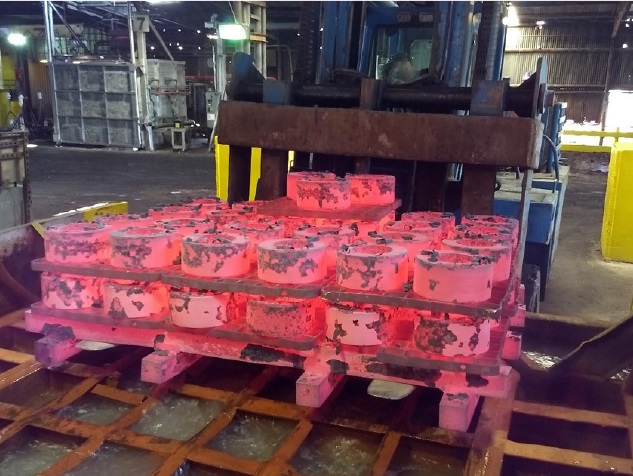
Heat Treating Forged Flanges & Pressure Vessels
In our manufacturing of forged flanges and pressure vessels, heat treating plays a crucial role in shaping and improving the properties of the metal. Here’s an overview of the process.
Forging Flanges
Material Selection: The process starts with selecting a suitable material, typically a metal like steel, which has properties suitable for the desired application.
Heating: The metal is heated in a furnace to a temperature that makes it malleable, usually between 950°C and 1250°C (1742°F to 2282°F), depending on the material. This high temperature allows the metal to be shaped without cracking or breaking.
Forging: Once the metal reaches the desired temperature, it is removed from the furnace and placed on a die. A hammer or press then applies force to shape the metal into the flange. The heated state of the metal makes it easier to deform and achieve the desired shape and size.
Reheating: In some cases, the metal may need to be reheated several times during the forging process to maintain the necessary temperature and workability.
Cooling and Heat Treatment: After forging, the metal is allowed to cool, often in a controlled manner to achieve specific mechanical properties. Heat treatments such as annealing, normalizing, or quenching and tempering may follow to refine the grain structure, improve toughness, and reduce residual stresses.
Manufacturing Pressure Vessels
Material Preparation: Similar to flanges, the process begins with selecting the appropriate material, often steel or another alloy, known for its strength and durability.
Plate Heating: Large steel plates used in pressure vessels are heated in a furnace to make them pliable for forming. The heating temperature is typically in the range of 900°C to 1200°C (1652°F to 2192°F).
Forming: The heated plates are then formed into the required shapes, such as cylindrical shells or dome ends, using processes like rolling or pressing. The high temperature makes the metal flexible enough to be shaped without cracking.
Welding: Sections of the pressure vessel are welded together while maintaining high temperatures to ensure proper fusion of the materials. Preheating and post-weld heat treatment are often used to reduce the risk of a weld cracking and to relieve residual stresses.
Heat Treatment: Post-formation, the entire vessel may undergo heat treatment processes like stress relieving or normalization. These treatments involve heating the vessel to a set temperature and then cooling it at a controlled rate to achieve the desired properties and structural integrity.
Quality Control: Throughout the process, heat treating is applied to ensure the quality of the pressure vessel or forged flange. This includes non-destructive testing methods like ultrasonic testing, radiography, and hydrostatic testing, often conducted at various stages of manufacturing to ensure the integrity and safety of the pressure vessel.
Heating is essential in both processes to manipulate the metal effectively and to achieve the necessary mechanical properties and dimensions required for the final product.
